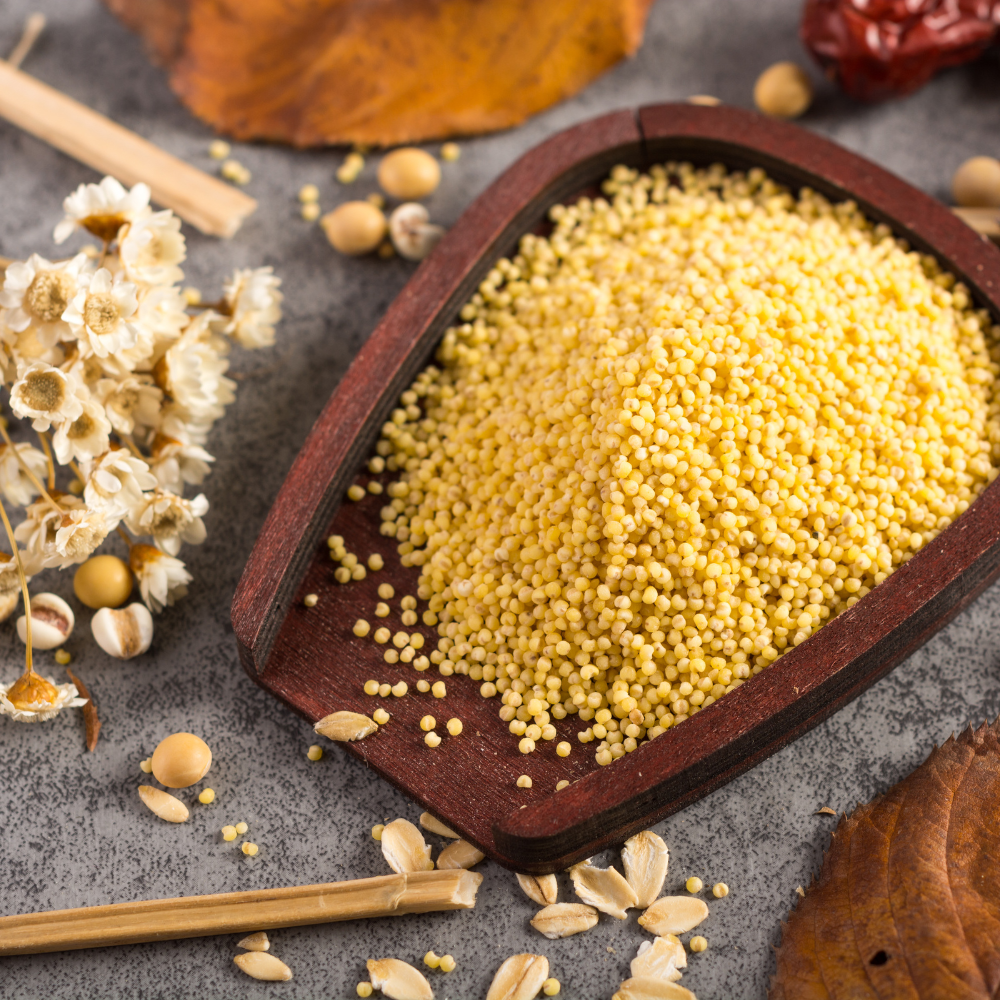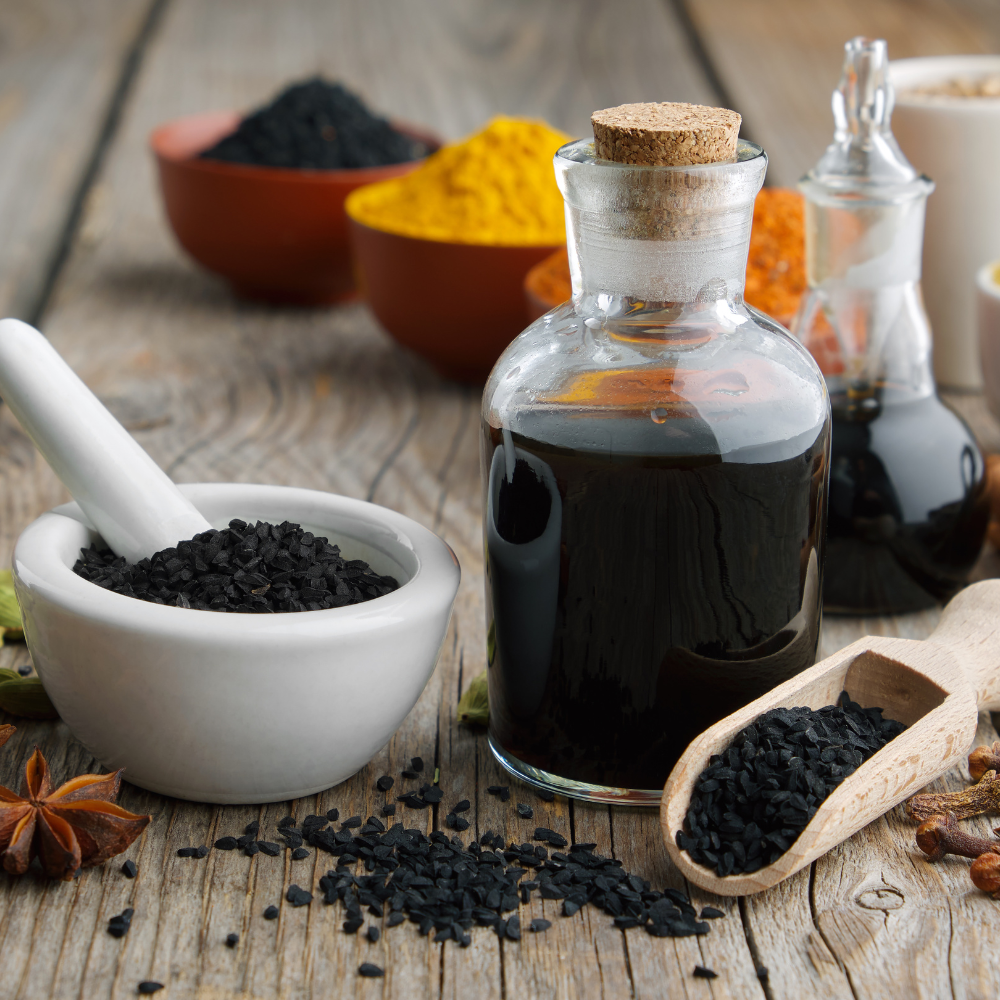Dals, also known as lentils, are a staple food in many Indian households. They are not only popular for their taste but also their nutritional value. Dals are rich in protein and fibre, making them an essential source of nutrients for vegetarians and non-vegetarians alike. There are various types of dals available in the market – each with its unique flavour and texture.
In this article, we will discuss the different types of dals you can find in India. We will explore how different daals varieties can be used to create delicious, nutritious, and satisfying dishes.
Names of Different Types of Dals
There are several different dal types in India, and they all have different names in different languages. In this section, we'll discuss the types of dals with their English and Hindi names:
| Image | English Dal Name | Hindi Dal Name |
 |
Split Yellow Lentils | Moong Dal |
 |
Whole/Split Brown/Red/Orange Lentils | Masoor Dal |
 |
Whole/Split White/Black Gram | Urad Dal |
 |
Split Bengal Gram/Chickpeas | Chana Dal |
 |
Red Kidney Beans | Rajma |
 |
Black Eyed Peas | Lobia/Chawli |
 |
Moth Beans | Matki |
 |
Whole Green Gram | Sabut Mung |
 |
Black Chickpeas | Kala Chana |
 |
White Chickpeas | Kabuli Chana |
 |
Yellow Split Pigeon Peas | Toor Dal/Tuvar Dal/Arhar Dal |
Everything You Need to Know About the Types of Dals
We Indians love our comfort food – the good old Indian dal. But has it ever occurred to you how many different types of dals there are and that you can make so many more things from them other than the plain old dal? We'll help you navigate through the confusing world of the different types of dals and help you give different ideas on what other things you can make from them:
Split Yellow Moong Dal
The yellow moong dal is one of the most commonly used types of dals in Indian kitchens. Since this dal is unhusked, it gets cooked easily without waiting long to get soaked. From making the classic everyday dal to moong dal ka halwa, these split yellow lentils can be used in different dishes, ranging from savoury to sweet. You can also use yellow moong daal to make khichdi, salad, and stuffed parathas.
Whole Green Moong Dal
Packed with plenty of essential nutrients – like protein, manganese, magnesium, fibre, and more – whole green moong dal is a powerhouse of nutrition without it being heavy on the stomach. You can eat this type of moong dal sprouted as well as whole. While it's more common to use green moong in stews and dals in North India, it's majorly used to make Pesarattu (similar to dosas) in South India. From soups and salads to pulao and cheelas, this vegan-friendly dal variety is widely famous in Indian cuisine.
Whole Masoor Dal
This brown-skinned lentil is filled with fibre and makes your dal protein-rich. You need to soak masoor dal for almost six hours or overnight to enjoy the flavourful taste of this delicious dal. Commonly used to make tadkewali masoor dal in North India, you can also make the famous khichda from this dal variety.
Split Orange Masoor Dal
The split orange masoor dal is the de-husked version of the whole masoor dal. This dal variety is quick to cook and easy to make. It's one of the types of dals that's also relatively easier on the stomach, so digesting it isn't a huge issue. Containing potassium, fibre, iron, and essential amino acids, split orange masoor dal holds an earthy flavour made in different ways, depending on the region.
Whole Black Urad Dal
Black colour on the outer layer and white in colour in the interior, whole black urad dal is a dal variety filled with fibre and must be soaked overnight before cooking. Famous for being the base grain for preparing the North Indian dish "Dal Makhani," this black urad dal variety is also used to make dal bukhara, pepper vada, and adadiya pak.
Split Black Urad Dal
The split black urad dal is a split variation of whole black urad dal and is best used for dishes that need to ground these grains for making a batter.
Whole White Urad Dal
You can make a variety of vadas and dosas with whole white urad dal, as this type of urad dal is best used where it is needed to be churned into flour or ground into a batter. You can make the popular South India Medu Vada and North Indian Dahi Vada with this dal variety.
Split White Urad Dal
This type of urad dal is popular in South India and is an essential element in the seasoning and tadka to add flavour to any dish. Apart from this, this dal variety is also used to make payasams, vadas, and papads.
Split Chana Dal
This deskinned split chana dal contains a nutty flavour that can pair well with spices and make the perfect comforting and warm meal. This dal variety can be used to make various dishes, like cheelas, koftas, puran poli, and dry curries.
Black Chickpeas
Also known as kala chana, black chickpeas need to be soaked overnight and pressure cooked for them to be used to make delicious dishes. In Kerala, this type of chana dal is used to make an authentic dish called Kadala curry, that's mixed with coconut milk.
White Chickpeas
White chickpeas are used to make the classic North Indian dish, pindi chole, served with the popular kulcha or bhatura. Also used as the main ingredient in Mediterranean dishes like falafel and hummus, white chickpeas or kabuli chana make the most delicious tasting dishes.
Red Kidney Beans
The famous North India dish Rajma Chawal contains red kidney beans, also known as rajma, as its primary ingredient. This dal variety makes the perfect gravy and goes best with white rice, but it's not just limited to that. You can make a salad from boiled rajma or add some to your pulao.
Black Eyed Peas
Also known as lobia and white chawli, this dal variety tastes the best when made into a delicious curry. But if you stir fry it, you can get to make sundal out of it, and if you simply boil it, you can get to make a salad.
Moth Beans
Rich in protein, moth beans are a type of dal that can provide you with energy for long. Along with protein, it's also packed with phosphorus, potassium, magnesium, vitamin B, iron, manganese, sodium, copper, and zinc. You can make delicious curry out of this dal variety or turn it into light and high-fibrous khichdi.
Dals are an essential ingredient in Indian cuisine and come in various types that differ in taste, texture, and nutritional value. From the protein-rich lentils to the fibre-packed split peas, each different type of dal offers unique flavour profiles that can enhance your cooking experience. Whether you prefer the mild aroma of moong dal or the robust taste of chana dal, incorporating different dal varieties into your diet can help you achieve a balanced nutrient intake and add diversity to your meals.
So next time you're at the grocery store or planning your menu, consider trying a new type of dal and expanding your culinary horizons.
FAQs: Most Common Types of Dals Every Kitchen Should Have
What Are The Different Types Of Indian Beans Commonly Used In Indian Cuisine?
Whole pulses are a staple in Indian cooking. Popular varieties include black gram (urad dal), green gram (moong dal), chickpeas (chana), lentils (masoor dal), and pigeon peas (toor dal).
How Do I Incorporate Whole Pulses Into My Daily Diet For A Healthy Lifestyle?
Including whole pulses in your diet is easy and nutritious. Try adding them to soups, stews, or salads, or preparing traditional Indian dishes like dal curry. These pulses are rich in protein, fibre, and essential nutrients.
Types Of Indian Beans Commonly Used In Cooking And Their Nutritional Benefits?
Indian cuisine features a variety of beans, including kidney beans (rajma), black-eyed peas (lobia), and garbanzo beans (kabuli chana). These beans are excellent sources of protein, fibre, and vitamins, contributing to a well-balanced diet.
What are the health benefits of consuming whole pulses and dals regularly?
Whole pulses and dals offer numerous health benefits, such as promoting heart health, aiding in digestion, and providing essential nutrients. Their high fibre content helps in maintaining weight and managing blood sugar levels.
Are there any traditional recipes that showcase the diversity of Indian whole pulses?
Absolutely! Explore traditional Indian recipes like dal makhani, moong dal tadka, or chana masala to experience the rich flavours and textures of different whole pulses. These dishes not only satisfy the taste buds but also offer a wholesome, nutritious meal.
How many types of dal are there?
There are numerous types of dal in India, each derived from different pulses and legumes, offering a wide range of textures, flavors, and nutritional profiles.
What are the different kinds of dal?
Some popular variety of dal in India include moong dal, masoor dal, toor dal (arhar dal), chana dal, urad dal, and rajma (kidney beans), among others.
Which is the most popular dal in India?
While preferences may vary regionally, some of the most widely consumed dals across India include toor dal (pigeon pea) and moong dal (split yellow lentils) due to their versatility in cooking and nutritional benefits.
Can you provide names of Indian dal types?
Sure! Some common Indian dal types include masoor dal (red lentils), moong dal (split green gram), toor dal (pigeon peas), chana dal (split chickpeas), urad dal (black gram), and arhar dal (split pigeon peas).










